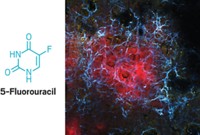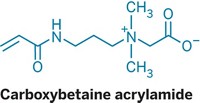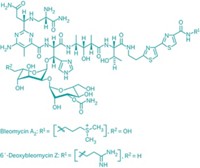Advertisement
Grab your lab coat. Let's get started
Welcome!
Welcome!
Create an account below to get 6 C&EN articles per month, receive newsletters and more - all free.
It seems this is your first time logging in online. Please enter the following information to continue.
As an ACS member you automatically get access to this site. All we need is few more details to create your reading experience.
Not you? Sign in with a different account.
Not you? Sign in with a different account.
ERROR 1
ERROR 1
ERROR 2
ERROR 2
ERROR 2
ERROR 2
ERROR 2
Password and Confirm password must match.
If you have an ACS member number, please enter it here so we can link this account to your membership. (optional)
ERROR 2
ACS values your privacy. By submitting your information, you are gaining access to C&EN and subscribing to our weekly newsletter. We use the information you provide to make your reading experience better, and we will never sell your data to third party members.
Environment
Science Concentrates
September 12, 2005
| A version of this story appeared in
Volume 83, Issue 37
Polymer enhances sperm vitality
A hybrid polymer can prevent oxidative damage of pig sperm and enhance fertility, according to a new study (Nat. Chem. Biol., published online Sept. 4, dx.doi.org/10.1038/nchembio730). Benjamin G. Davis of the University of Oxford, in England, Neil R. Cameron of the University of Durham, in England, and coworkers hope that a similar approach might be used to increase fertility rates in humans and rare or endangered mammal species during artificial insemination procedures. Oxidative damage reduces the functional lifespan of mammalian sperm and can significantly reduce fertility rates during artificial insemination procedures. The team's polymer protects against such oxidative damage by delivering the antioxidant vitamin E (red) to sperm. Galactose groups (green) act as the "sperm-homing device," delivering the polymer to cell-surface galactose-binding receptors that transport the antioxidant cargo into the sperm cell via endocytosis. Pendant amine groups (black) serve to enhance the polymer's solubility. Polymers with vitamin E/galactose/amine compositions of 20:20:60 and 30:20:50 reduced oxidative damage levels of pig sperm, boosting the sperm's vitality, lifespan, and fertility rates, the researchers report.
Biocatalytic route to 'sweet silicones'
Organosilicon-sugar conjugates, also known as "sweet silicones," can be used as surfactants, adhesion promoters, and chiral templates. Their synthesis usually requires an acid or base catalyst, protection-deprotection steps, and activation of carboxylic acid terminal groups on the siloxane starting material, but uncontrolled side reactions and poor regioselectivity have impeded the ability to control the structure of the resulting compounds. Richard A. Gross of Polytechnic University, Brooklyn, N.Y., and his colleagues there and at Dow Corning considered that enzyme catalysis might circumvent these problems (Org. Lett. 2005, 7, 3857). The researchers used Candida antarctica lipase B immobilized on acrylic beads (Novozyme 435) to catalyze esterification of dimethylsiloxane oligomers containing carboxylic acid end groups with ethyl glucoside. The resulting conjugates (shown, x = 0, 7, and 65) were prepared in a solventless one-pot reaction at 70 ° C over 36 hours with high regioselectivity and in moderate yields. This greener, simplified route should allow a more diverse set of sweet silicones to be prepared and used in a broader range of applications, the researchers conclude.
Salt levels up in northeast
The salt levels in freshwater in the northeastern U.S. are rising, thanks to increases in the number of roads and in the use of deicers in the winter. A team led by Sujay S. Kaushal, Peter M. Groffman, and Gene E. Likens at the Institute of Ecosystem Studies, Millbrook, N.Y., measured chloride levels in streams in Maryland, New York, and New Hampshire (Proc. Natl. Acad. Sci. USA, published online at dx.doi.org/10.1073/pnas.0506414102). They found an increase in the baseline chloride concentration--exceeding 100 mg/L on a seasonal basis in some places--over the past 30 years. Assuming a linear rate of increase, the authors estimate that chloride levels in some streams will exceed 250 mg/L in the next century, making them toxic to sensitive freshwater life and not potable for humans.
ZnO nanobelt curls up
A ZnO nanohelix (shown) is the newest addition to Zhong Lin Wang's collection of semiconducting, piezoelectric nanostructures (Science 2005, 309, 1700). Wang's materials science research group at Georgia Tech previously made nanobelts, nanosprings, nanocombs, nanorings, and nanobows of ZnO, but Wang says the nanohelices' growth mode is unlike anything previously imagined. In the earlier work, the curling of nanobelts into nanorings and nanosprings was attributed to electrostatic interactions. According to the report, the nanobelt curls into a rigid nanohelix because a one-dimensional superlattice forms across the nanobelt during its vapor-solid growth process. This discovery, Wang says, provides a fundamental contribution to crystal growth at the nanoscale. He adds that the nanohelices could give scientists a new tool with which to build tiny devices such as sensors, transducers, and resonators.
Food colorant curbs immune response
A new study revealing how a caramel food-coloring agent modulates the body's ability to defend itself against infection may aid the search for new immunosuppressive drugs. Jason G. Cyster and coworkers at the University of California, San Francisco, describe how 2-acetyl-4-tetrahydroxybutylimidazole (shown) blocks the migration of white blood cells from lymph nodes to the lymph and the blood, where they are needed to fight infection (Science 2005, 309, 1735). Cyster and his team show that this food colorant interferes with metabolism of sphingosine-1-phosphate (S1P), a signaling lipid whose levels regulate white blood cell migration. By inhibiting S1P lyase, the enzyme charged with degrading S1P, the food colorant causes S1P to build up, thereby blocking migration of white blood cells from the lymph nodes and suppressing the body's immune response. The dosage of the food colorant required to elicit this effect is much higher than is typically ingested, Cyster notes. But the finding suggests that S1P lyase is a promising target for the design of selective immunosuppressive agents, he says.






Join the conversation
Contact the reporter
Submit a Letter to the Editor for publication
Engage with us on Twitter